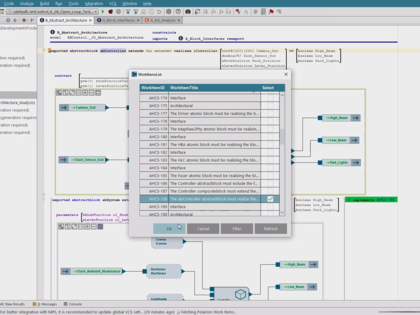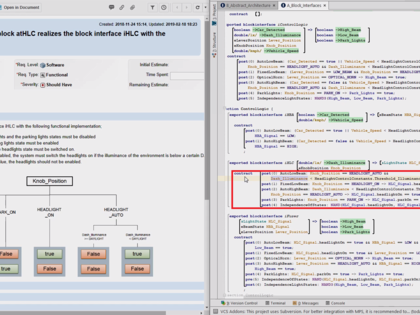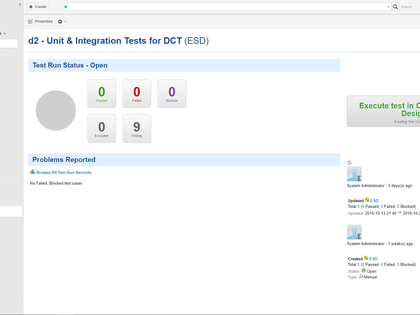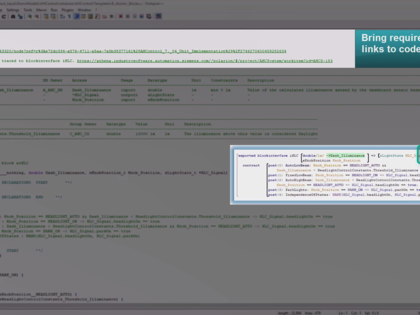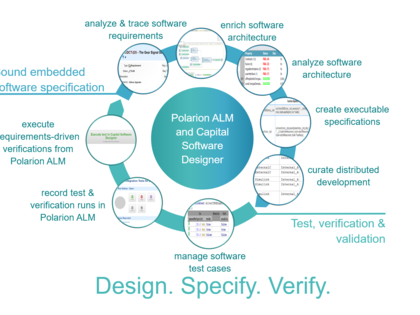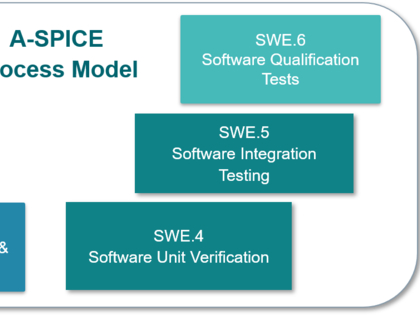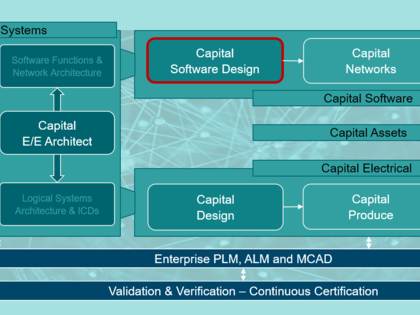This extension has been deprecated together with the Capital Software Designer product.
This is particularly true in the automotive industry, and the development of autonomous driving and advanced driving assistance systems (ADAS) as well as new mobility usage models such as shared rides and digital services needing.
Isolated tools and repositories prevent traceability and integral reporting and lead to problems like redundancy, information inconsistency, lack of automation and errors that are found late in the development cycles, raising the cost to repair.
Using the integrated Polarion and Capital Software Designer solution ensures consistent distribution of engineering and process assets to everybody involved in the design & specification, development, testing, and certification of software intensive mechatronic systems. The rich software architecture specification languages of Capital Software Designer allows for consistent specification and avoids introducing whole classes of software defects in the first place. This leads to improved traceability, product quality, reduced time-intensive testing, and reduced development costs due to avoidance and earlier detection of software defects in the product lifecycle.
Features
- Polarion ALM provides an orchestration platform that covers the entire development workflow from requirements engineering to test cases.
- Capital Software Designer frontloads quality assurance in the software development process through a contracts-based design approach and analyzable software architecture.
Benefits
- Achieve better quality and regulatory compliance through upfront analysis and automated audit trails.
- Bridge the gap between requirements, specification, software architecture, development, testing, verification and validation.
- Increase productivity through greater re-use of assets, enhanced bidirectional traceability, and test automation.
- Direct impact analysis and transparent regression testing following updates or changes.
Trace requirements to design, code and test
Capital Software Designer facilitates enterprise wide-collaboration by providing a tight integration with Polarion ALM, helping you keep track of all the requirements, manage test plans and collaborate with team members across the globe.
The integration enables users to search and filter through the extensive list of requirements and establish bi-directional trace links between design, implementation and test artefacts in Capital Software Designer and requirement and specifications managed in the Polarion ALM environment.
Use contract-based design approach with Polarion requirements
According to the Software Engineering Institute, nearly 20% of the cost of the average software intensive system project is due to rework that is directly attributable to inaccurate, incomplete, or ambiguous requirements. If you break down the numbers, the stats show that 30-40% of the average project is rework and that 50-70% of that rework is caused by requirements errors.
Capital Software Designer’s contract-based design approach lets you create an executable form of the Polarion ALM’s text requirements. These engineering contracts are then put on top of the software architecture to ensure requirements and architecture consistency, drive the software implementation specification, enable smooth software integration and channel unit or integration testing.
Perform requirement-driven test and verification
This capability allows users to perform tests and analysis with respect to both functional and non-functional requirements, all without leaving the Polarion ALM environment.
The integration between two tools enable Polarion users to directly trigger test in Capital Software Designer by composing and executing a test run in Polarion. Test and verification results along with counter examples for failed tests are automatically transferred to Polarion. Failed tests automatically lead to Polarion defect work items that can be tracked to resolution.

